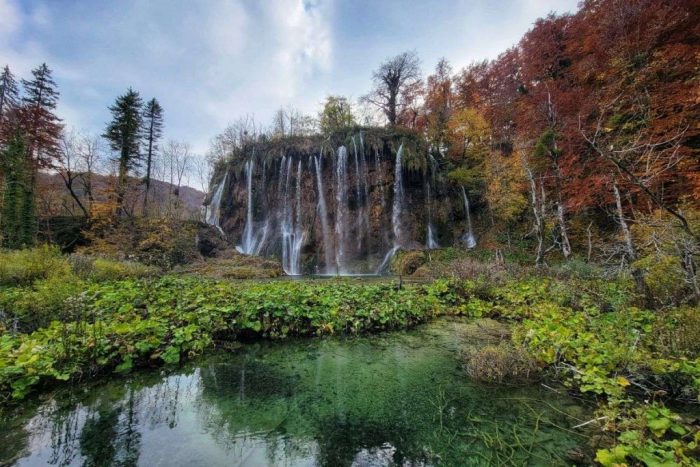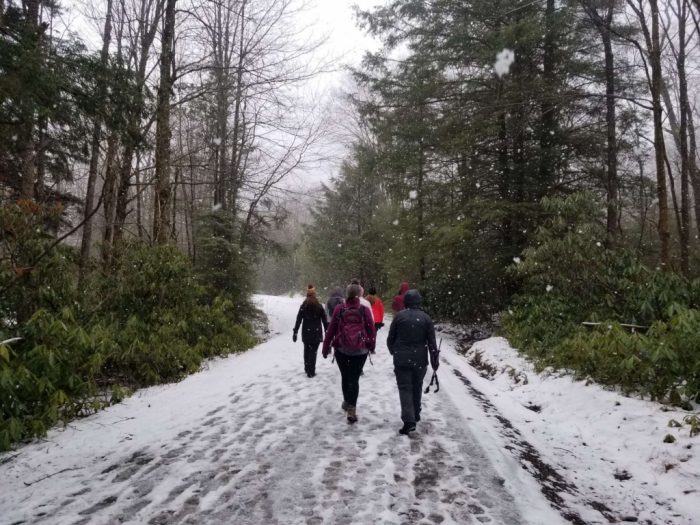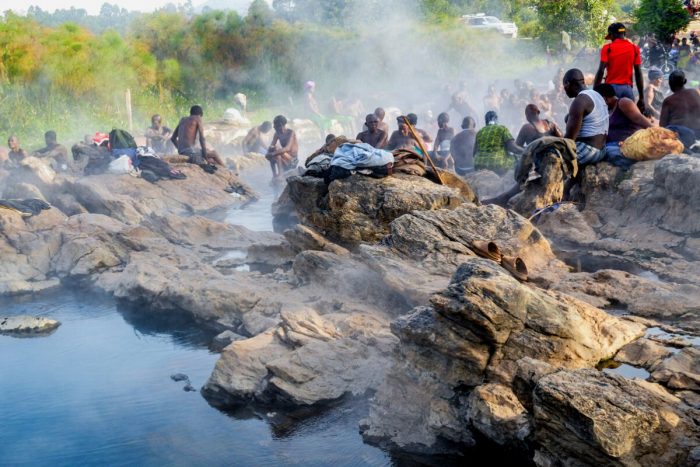Best Time to Visit Iceland for Outdoor Adventure
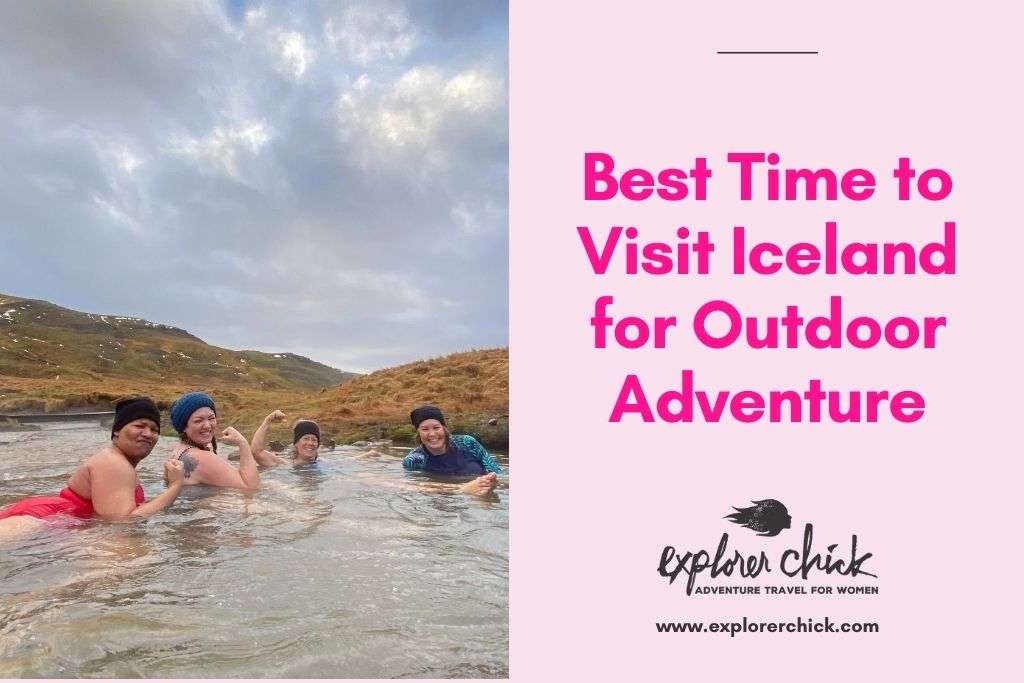
Is Iceland on your bucket list? Whether you’d love to hike the glaciers, explore ice caves, marvel at waterfalls, capture the amazing northern lights for the best TikTok EVER, or experience the nightlife in the land of the midnight sun, this unique country has something for everyone.
But when is the best time to visit Iceland? Is winter TOO cold? And do the Northern Lights light up the skies every night, all year round? Read on for the answers to these and many other questions you might have.
Weather in Iceland
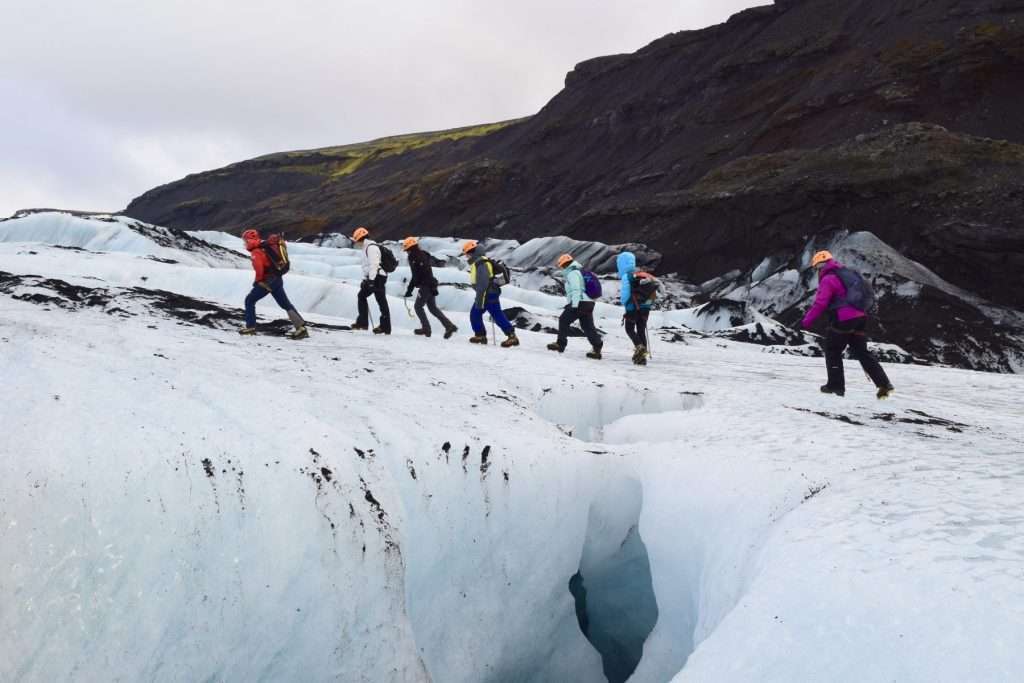
You might think that given the name, Iceland is, well, icy all year round. Is there ever a time you can visit and wear your fave denim shorts and tee?
Well that rather depends on how hardy you are and what the weather’s like in your local region. Those used to heat will probably want long sleeves and a light jacket even during the summer months. However, even in winter Iceland can be milder than New York during a bad winter. Northern Iceland is usually colder than the south coast.
Here’s a rough guide to average temperatures throughout the year in Iceland:
| Month | High | Low |
| January | 35°F | 27°F |
| February | 34°F | 26°F |
| March | 38°F | 28°F |
| April | 45°F | 34°F |
| May | 50°F | 40°F |
| June | 59°F | 48°F |
| July | 59°F | 50°F |
| August | 55°F | 46°F |
| September | 50°F | 41°F |
| October | 44°F | 36°F |
| November | 38°F | 30°F |
| December | 36°F | 27°F |
Summer in Iceland
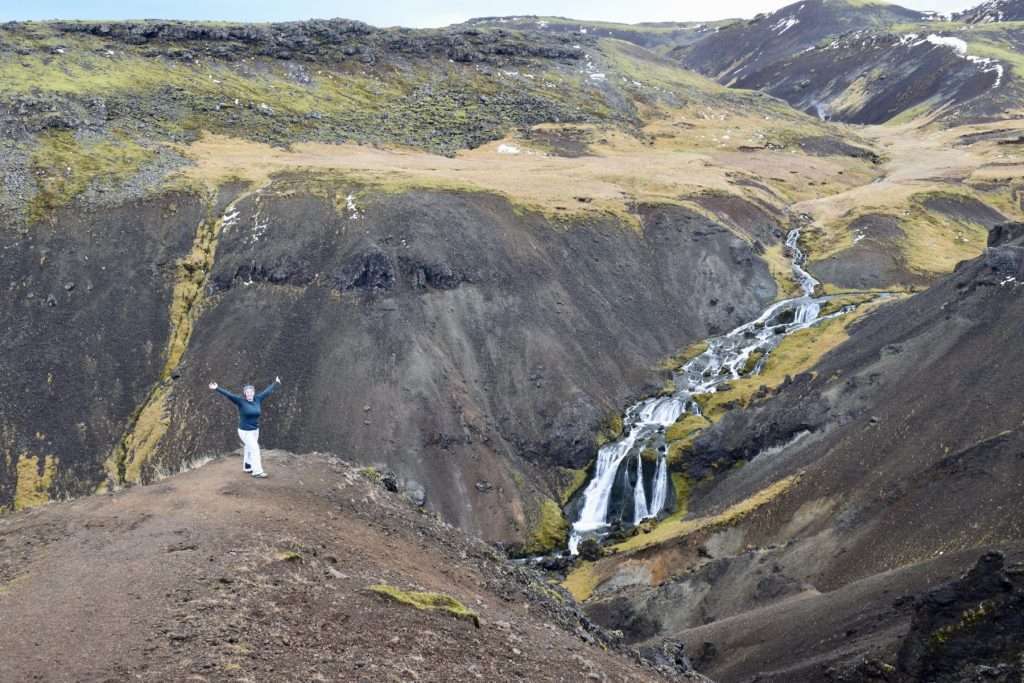
Iceland is an incredibly diverse country and travelers report that visiting different regions is like exploring different countries or even a different planet. From black volcanic beaches to blue-white ice caps, there is so much to see and summer is probably the best time for a road trip.
Summer is the also best time to plan whale watch boat tours and hikes and it’s the only season you can access the awe-inspiring Highlands.The west fjords in particular are worth diverting off the ring road for during high season (May/June to August) and road conditions will be much better than during the bleak winter months.
Summer is the time to experience the Midnight Sun so if you want to cancel bedtime and party on, this might be the best time for you to visit Iceland.
Winter in Iceland
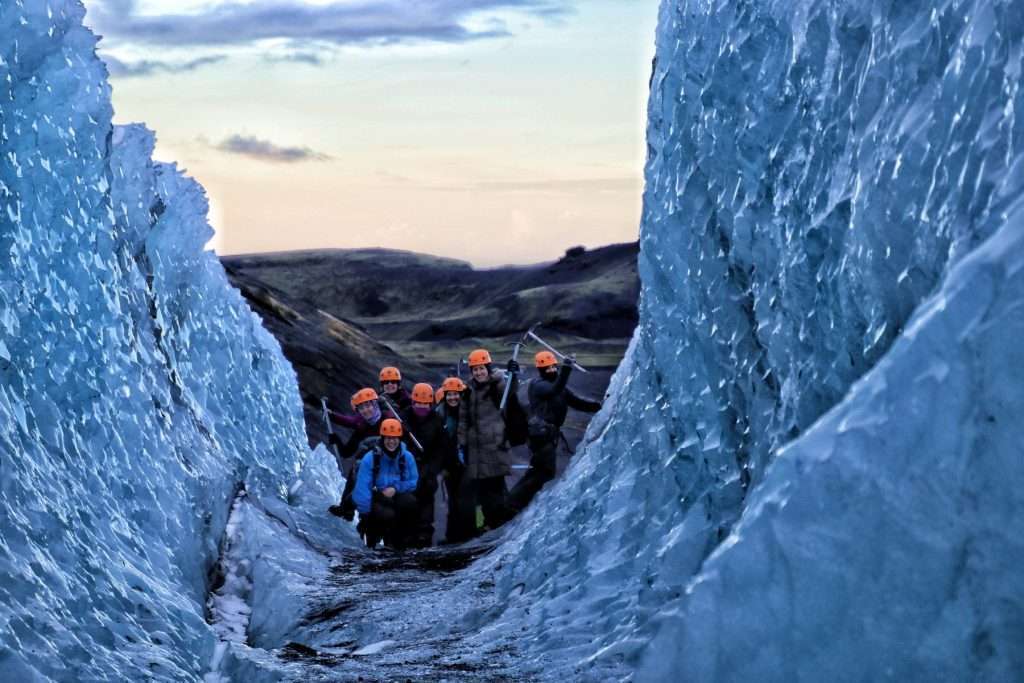
Icelandic weather in winter can make some areas inaccessible, but the reward for braving the ice, snow falls and an eye watering wind chill is that, apart from around Christmas and New Year’s Eve, there are fewer tourists, fewer crowds and the prices will be cheaper so you can save money.
There’s so much to do in Iceland during winter. Any activity you can do on snow is fair game in Iceland. Go skiing, snowboarding, or snowshoeing with spectacular views, or try ice climbing or caving. If you fancy a festive break the best time to visit Iceland is December when the country turns into a real life Christmas card.
Road Closures and Openings in Iceland
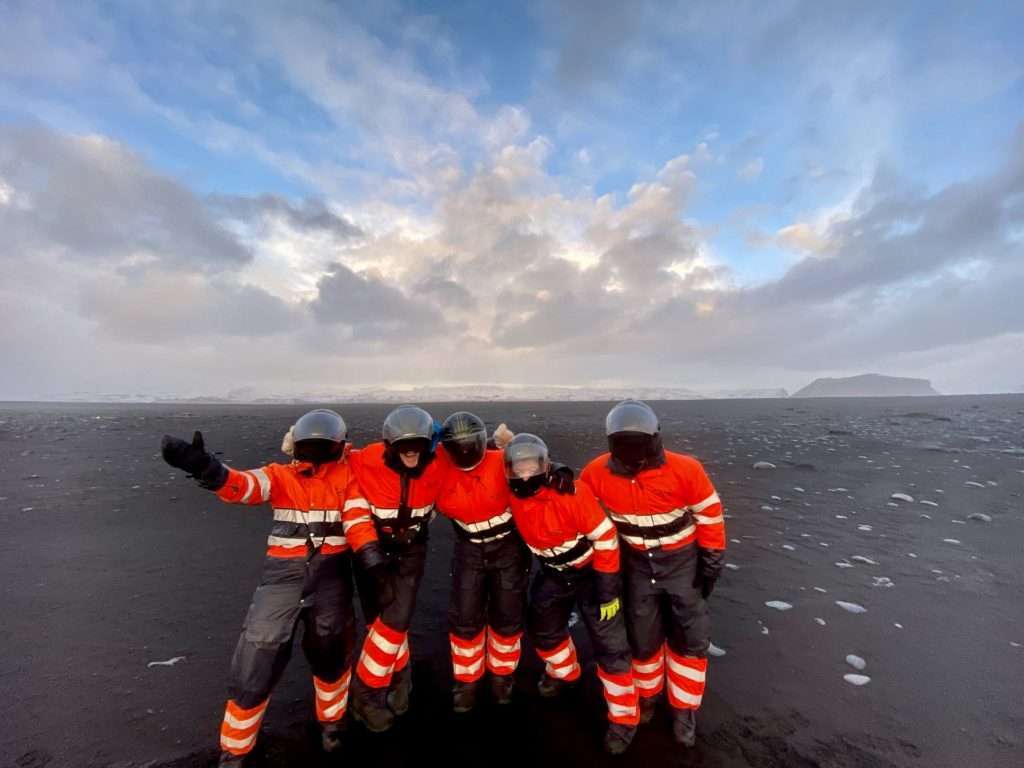
Unpredictable Icelandic weather can force road closures so if there is something of particular interest you want to see or do, it’s worth checking whether the roads are open. The Icelandic Road and Coastal Administration (IRCA) update their website regularly with weather and road closure advice. They also have an app or you can follow them on Twitter.
Booking day tours might be your safest option because if the weather changes quickly, local guides are more likely to know when and where mountain roads might close.
If you want to go at your own pace, you can use car rentals but pay attention to local weather forecasts and warnings. Have you seen that movie Centigrade where the main characters get stuck in their car in a snow drift?
Don’t be that tourist.
When Is Peak Tourist Season in Iceland?
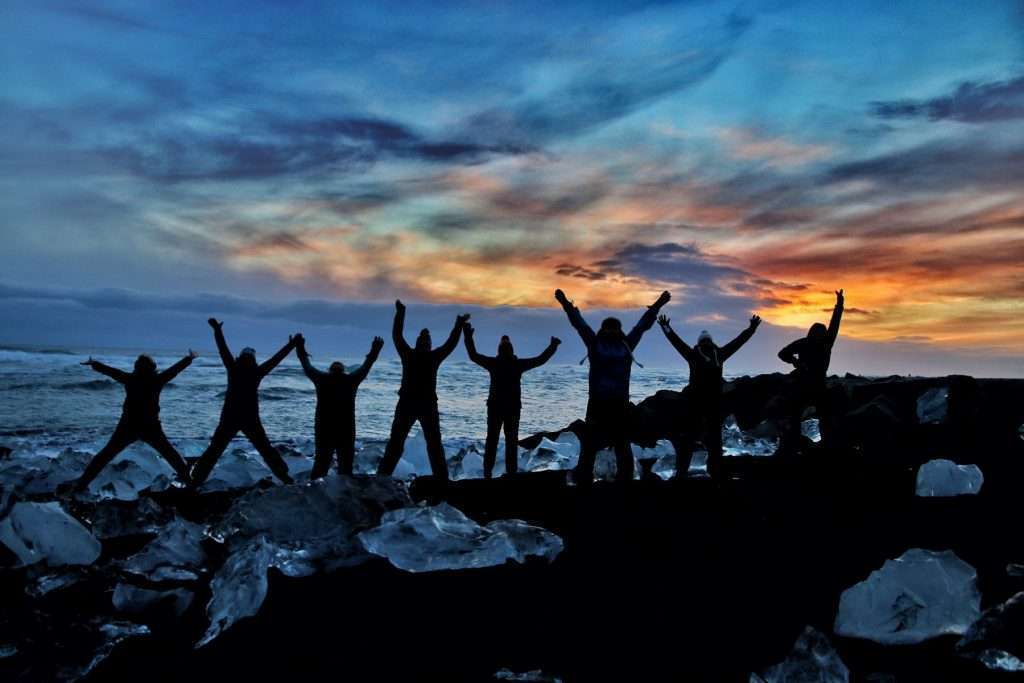

Summer (between late May and early June through to August) is generally considered peak tourist season as the average temperature is quite mild and you can visit all of Iceland. However, even when there are many visitors, you can always find glorious deserted open spaces.
The most popular attractions like Thingvellir national park will get crowded as most tours include it on their route so maybe self drive and go early to spend a few hours without battling through the bus parties. Or head to less popular destinations like the stunning East Fjords region along the Ring Road with its intriguing vistas and natural beauty.
What Is the Off Season in Iceland?
Actually, there isn’t really an off season in Iceland. The shoulder seasons are short- April to May and September to October. Most tourists visit Iceland in summer when it’s possible to explore the whole island, but each of the different seasons has wonderful qualities and you will love Iceland whatever season you choose.
Best Months to See the Northern Lights in Iceland
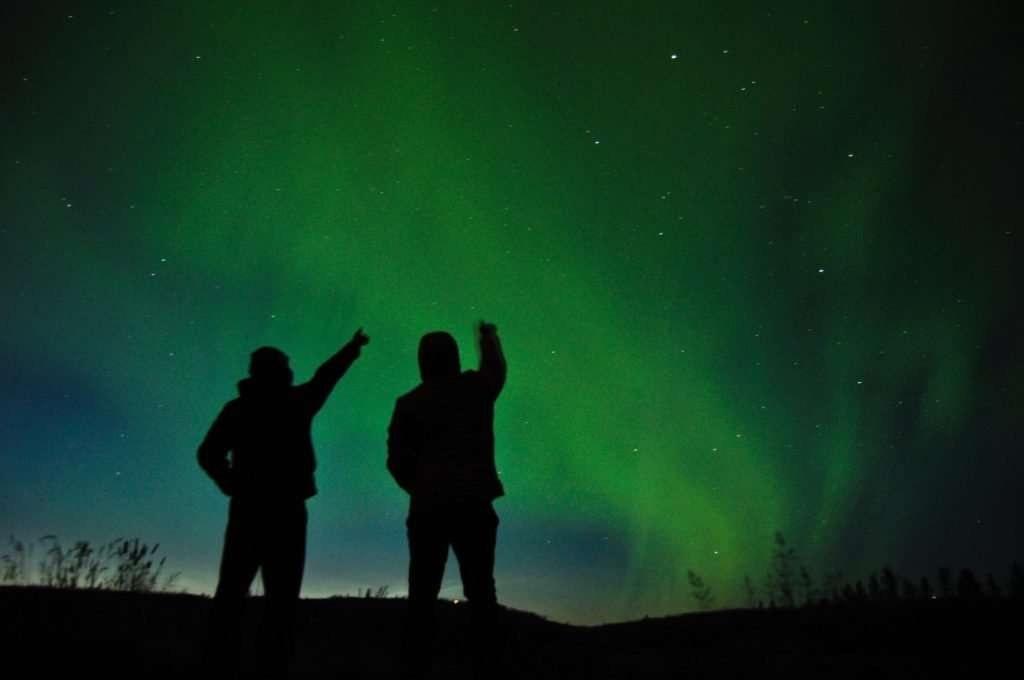

For many people, Iceland is synonymous with the elusive Northern lights, otherwise known as aurora borealis. Be warned, even visiting Iceland in the peak season for aurora borealis (December) does not guarantee you will see the sky lit up with this extraordinary phenomenon. However, if you are lucky you should be able to enjoy this magical natural light show anywhere in Iceland, even from the middle of Reykjavík.
Best Time to Visit Iceland for Midnight Sun
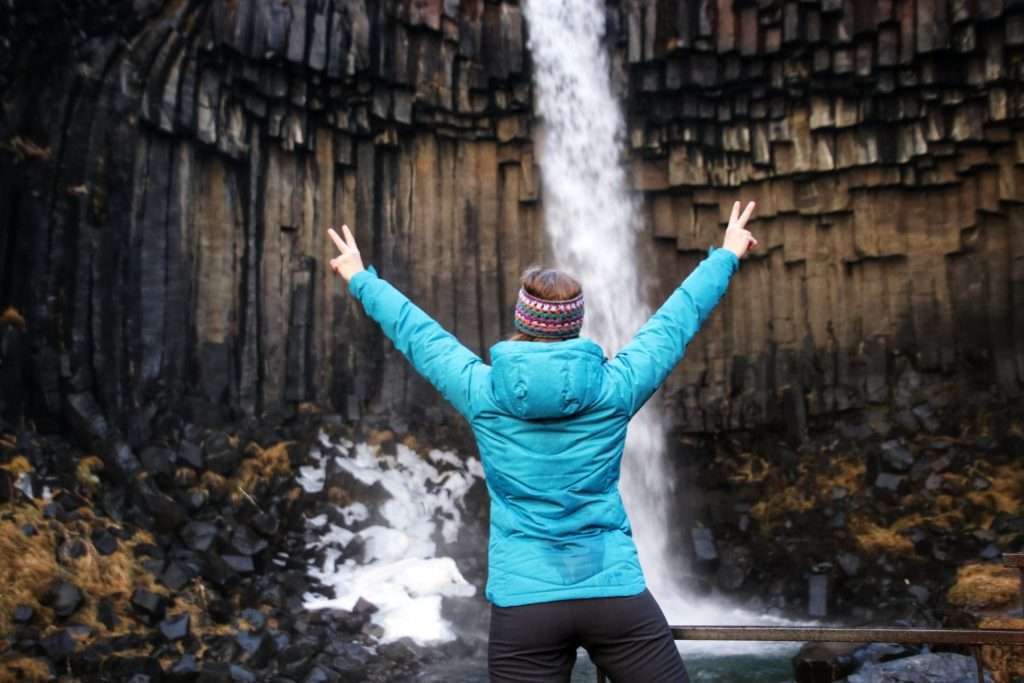

The best day to experience the Midnight sun phenomena is on the longest day, otherwise known as the summer solstice when there’s 21 hours between sunrise and sunset in Iceland. The hottest ticket in town at this time of year is the secret solstice festival which brings music, nature and local culture together for a 72 hour long extravaganza.
Best Time to Swim in Hot Springs (Including the Blue Lagoon!)
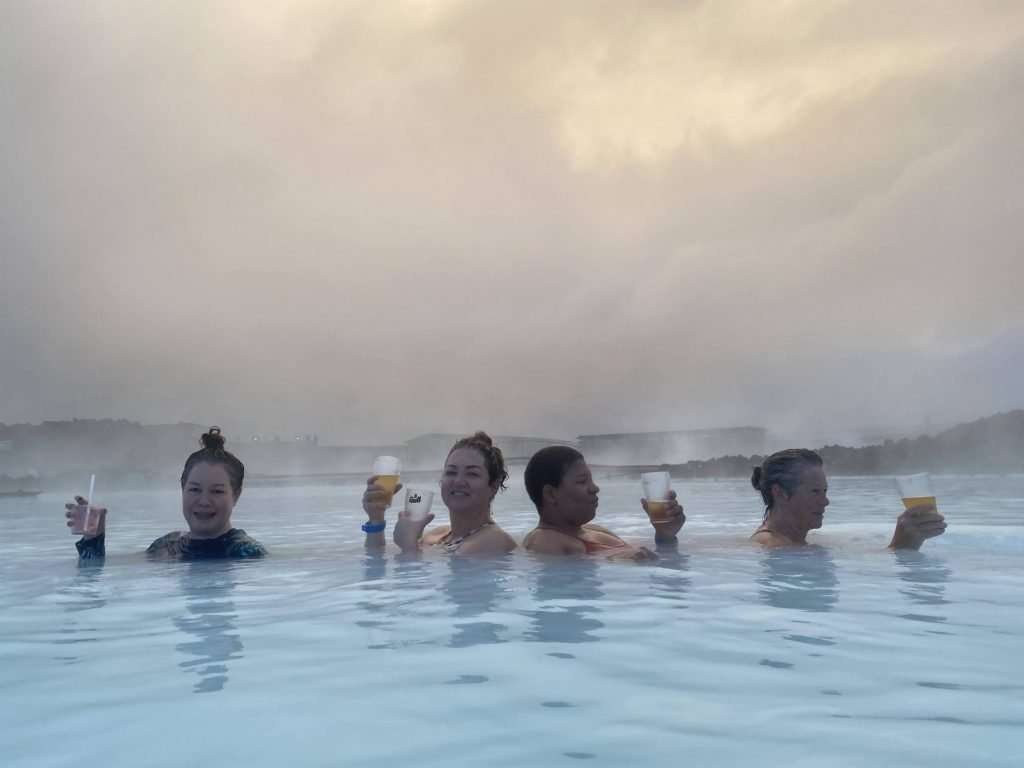

How hardy are you? If you want an exhilarating contrast between air and water temperature and the possibility of watching the Northern Lights from the comfort of a toasty hot spring, aim to swim in the evening in the winter months.
Visit in June for the longest golden hour ever and for long daylight hours enjoyed in the relaxing and restorative springs. For fewer crowds, book a slot at the Blue Lagoon in the late (or really early) hours because they are open at just about all hours of the day!
Best Time to See Wildlife in Iceland
You can see many breeds of whales all year round of the coasts of Iceland, but book a whale watching trip in summer for your best chance of seeing ocean wildlife. You can actually see quite a lot of wildlife all year round in Iceland, including reindeer, arctic foxes, seals, dolphins and porpoises.
In early spring you may spot nesting seabirds and from spring into summer you can marvel at one of the world’s largest puffin colonies. Amazing fact – 60% of the world’s puffins nest in Iceland. That’s a whopping 8 to 10 million puffins each year!
Best Time to Visit Reykjavik
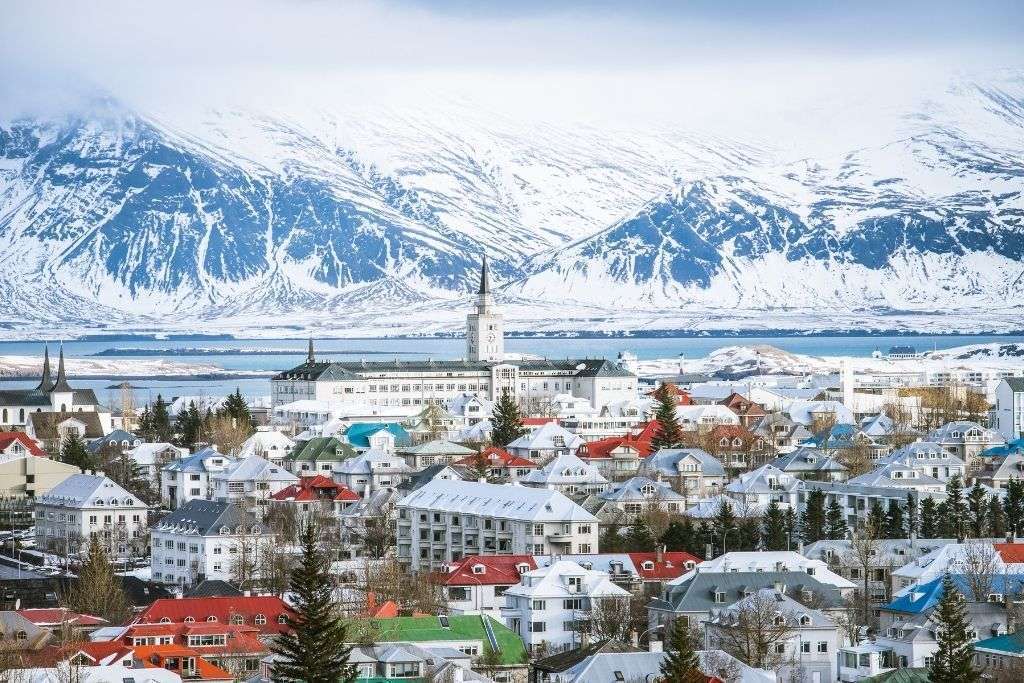

Reykjavik, Iceland’s capital and largest city, is on the south coast. There’s plenty to do all year round with a wide range of cultural attractions including art galleries, music venues and museums aplenty if that’s your thing. Buy a city card to get free or discounted admission to most museums in the city.
If you’re looking to experience the cultural scene of Iceland, Reykjavic hosts a number of festivals. The Winter Light Festival lights up the long nights with light installations around the city. Rainbow Reykjavik Winter Pride in March is also a fabulous celebration of diversity — come prepared to party!
Outdoorsy types will find plenty to occupy themselves on the Rejkjavic peninsula and along the southern coast with hot springs, volcanoes, volcanic beaches and lakes all a stone’s throw from the city’s shops, bars, restaurants, and clubs.
Best Time for Hiking in Iceland
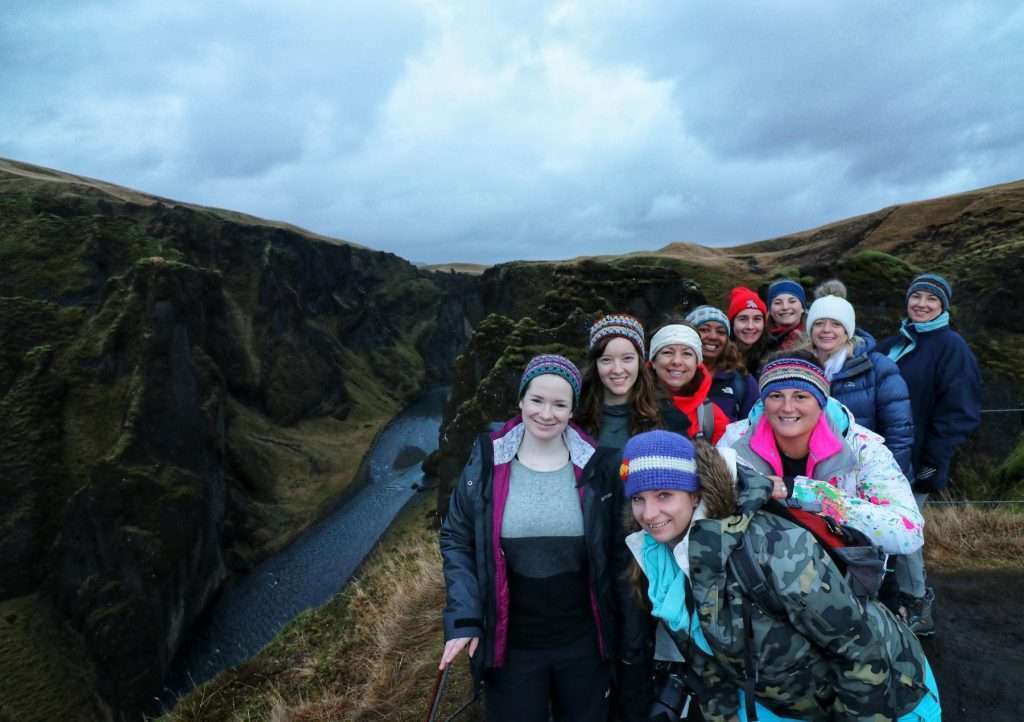

Don’t forget to pack your boots because Iceland is an amazing place for hiking. Even just a short detour off the Ring Road or golden circle can reveal some spectacular sights. The shoulder season and summer are probably the best times for hiking.
Even during those times though, be sure to pack your rain jacket and waterproof boots — rain is very common in many parts of the country!
Join Us for an Iceland Adventure!
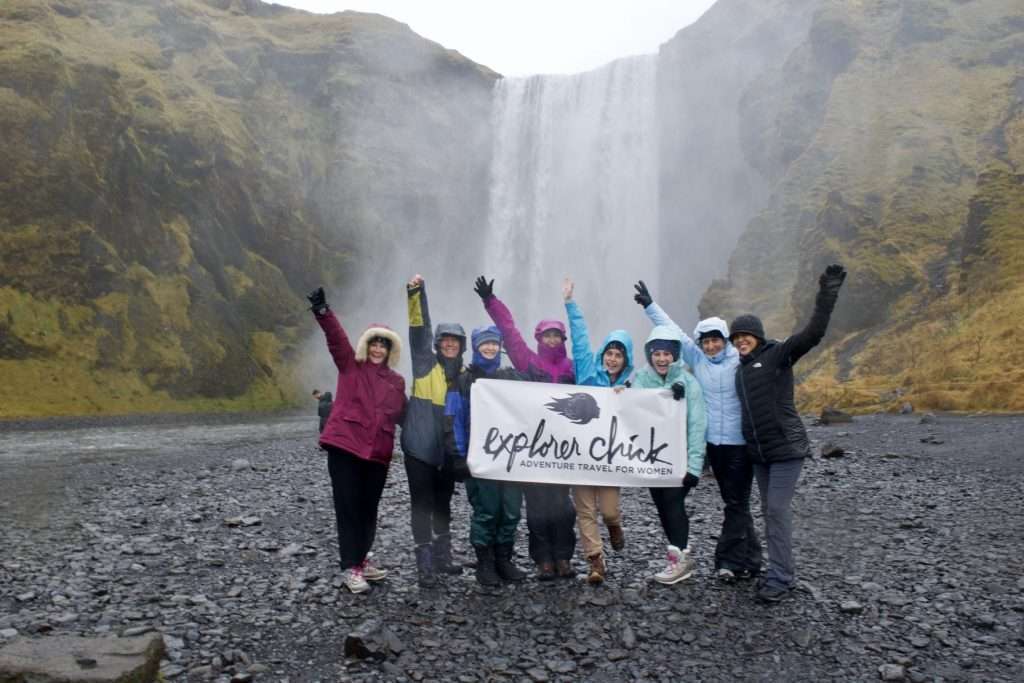

Excited about all the unique and spectacular experiences you could have in Iceland? Want to let your inner Viking out to play? Why not check out Explorer Chick’s thrilling Iceland itinerary and let Explorer Chick plan your adventure of a lifetime with other badass adventure women.
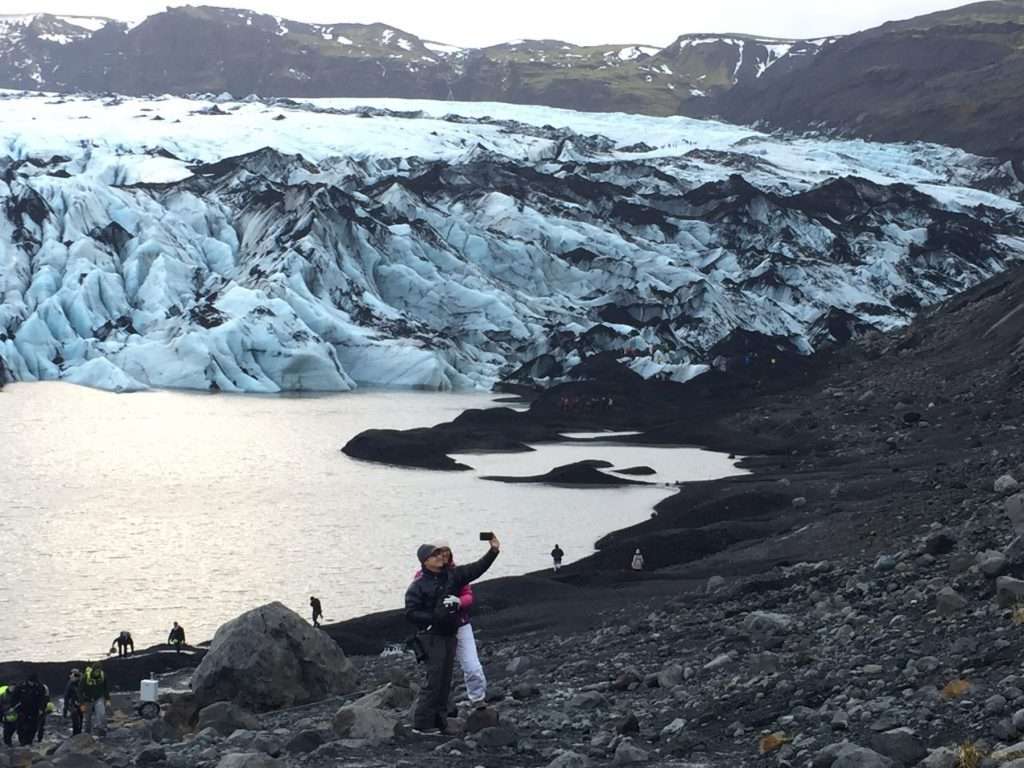

Meg Hughes
November 14th, 2018Wow, what an adventure! With the help of Guide Becca and Icelandic guide Tinna, we had a blast. Lots of walking, some climbing and kayaking. Food was plentiful and home made by the guides. Hostels were clean and comfortable, and the bus we got around on was big enough for comfort and small enough for speed. We saw the lights on our last night out and it was truly spectacular. In some locations, the wind can be brutally cold and very high. We encountered 80 mph gusts in a few places. Check the weather leading up to your departure- most of us were surprised it was warmer than where we live in the states. It is VERY wet , so make sure your gear is waterproof. Every hostel had hair dryers but bring your own shampoo/ conditioner and make sure you have any Over the Counter items you need, because the pharmacies , like everything, are pricey! With yoga pants, sweater and boots you will be dressed up enough for anything in the city. It’s a casual place with very friendly people. While the trip is ‘easy to moderate’ the walking is never level, there are lots of hills, so girls, check your cardio fitness. I wish I had!! LOL
Meet the Writer
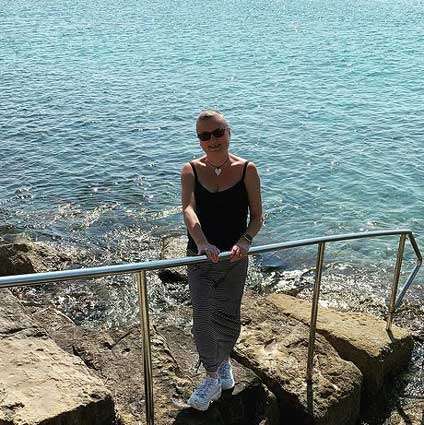

Afra is an award winning journalist who has enjoyed many adventures including swimming with sharks, crewing hot air balloons and canyoning. She started creating online content ten years ago, diversifying after years writing for print publications. She loves travel, great food, and her family. Not necessarily in that order.
Favorite outdoor adventure: Snorkeling in the warm waters off the coast of Cyprus
Read More About Iceland
- Best solo trips for women who love adventure
- Iceland Insights: Where To See Puffins
- Best Bucket List Adventures Around The World For Women
- How to Enjoy Iceland Hot Springs, According to Explorer Chicks
- These Foods You HAVE To Try In Iceland
- Best Time to Visit Iceland for Outdoor Adventure
- Solo Travel Europe: Top Destinations and Tips
- 8 Best Photo Spots in Iceland for Instagram Greatness



